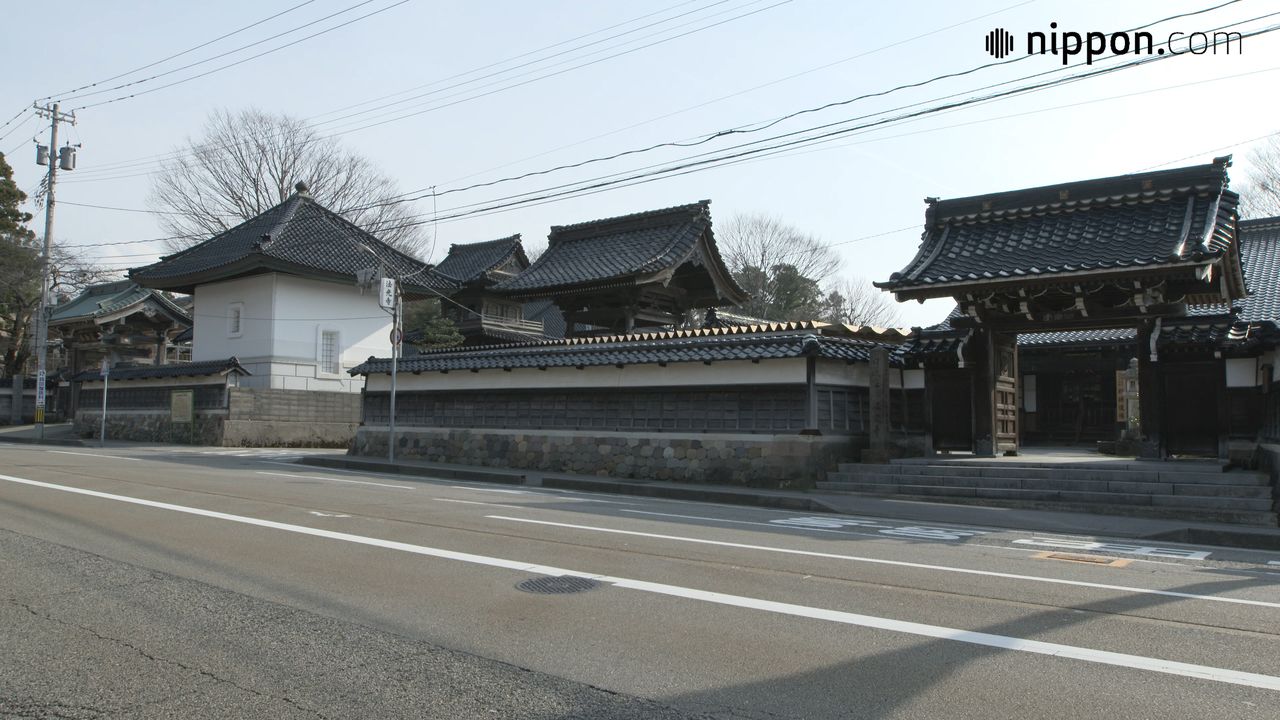
Kanazawa’s Teramachi: Two Distinctive Temple Districts in One
JapanIn video
Guide to Japan Travel Culture- English
- 日本語
- 简体字
- 繁體字
- Français
- Español
- العربية
- Русский
The Teramachi area of Kanazawa, Ishikawa Prefecture, is one of the city’s three major clusters of temples dating back to the Edo period (1600–1868), when Kanazawa was the seat of the powerful Maeda clan, rulers of the Kaga domain. In 2012 Teramachi—literally “temple town”—was designated as an “important preservation district for groups of traditional buildings.” The designated district actually consists of two areas. The first is Noda Teramachi. This is one of the three districts into which Maeda Toshitsune (1594–1658), third lord of the domain, had all the city’s temples concentrated for administrative purposes. It lies along the old Noda Kaidō (Noda Highway), and to this day the thoroughfare passes by a series of Edo-period temples with impressive gates and walls. The second area is Izumi Teramachi, which developed as a temple district more gradually than Noda Teramachi and has a different aspect, featuring a mixture of temples and townhouses (machiya).
A townhouse built in 1892, formerly consisting of family quarters above a street-level shop, has been converted into a guest house accommodating just one party a night. Here visitors can experience the atmosphere of a traditional Japanese residence. Another townhouse, which was built 150 years ago, has been converted into a gallery. As these examples show, contemporary owners are finding new ways of using the area’s buildings while preserving the streetscape.
(Originally published in Japanese. Created in cooperation with Kanazawa Cable Television.)